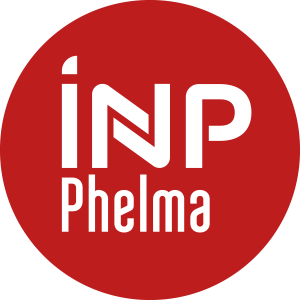Number of hours
- Lectures 16.0
- Projects 0
- Tutorials 14.0
- Internship 0
- Laboratory works 8.0
ECTS
ECTS 3.5
Goal(s)
Semiconductor devices are everywhere in our life, and they lie at the base of a still growing industry. Understanding them is thus fundamental.
The aim of this lecture are thus the following :
- Presenting fundamental semiconductor stacks : contact, jonction and MOS capacitor
- Understanding the band diagram of a semiconductor device
- Using basic equations for modelleing purpose.
Content(s)
Course :
0 - Reminders of semiconductor physics, electrostatics and charge transport
1 - Metal-semiconductor junctions Non-polarized junctions: output work, depletion regimes, weak and strong inversion, accumulation. Ohmic junctions and contacts. I(V) characteristic.
2 - MOS capacitance. Band diagram and space charge regimes. Q(V) relationships.
3 - Heterostructure. Band diagram and different SC combinations.
TD :
1 - Frequency diode
2 - Role of interface states on the Metal/SC contact
3 - Role of tunnel current in the Schottky Metal/SC contact
4 - MOS capacitor operation
Prerequisites
Some basic knowledge of solid state physics and semiconductor physics is required: some notion of crystal and crystallography, understanding of the origin and nature of the band structure of a semiconductor (E(k) relation) and origin of the effective mass.
Some notions of statistical physics are also necessary: origin of the Fermi-Dirac distribution function and significance of the Fermi level (~chemical potential).
Old memories of electrostatics will be revived in the first course (Gauss and Poisson equations, motion of a charge in a field and diffusion of carriers, as well as their associated currents).
Written exam 3h
Retake exam 2h
Examen écrit Session 1 : DS1
Contrôle continu Session 1 : CC1
Examen écrit Session 2 : DS2
N1 = Note finale session 1 = 80% DS1 + 20% CC1
N2 = Note finale session 2 = 80% DS2 + 20% CC1
Physique des semiconducteurs et des composants électroniques - Henry Mathieu, Edition Dunod



